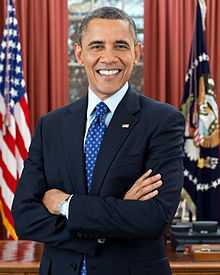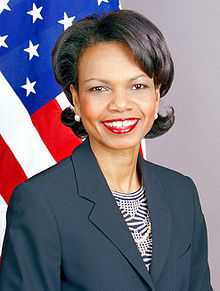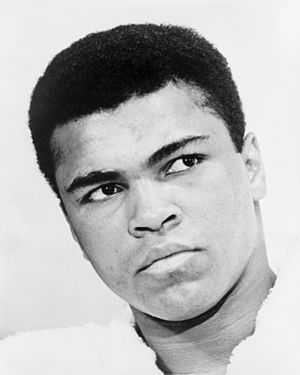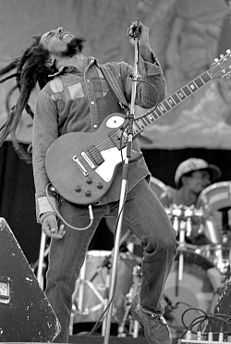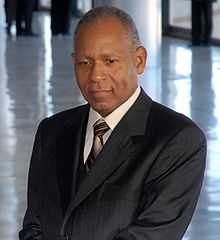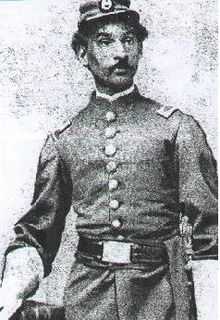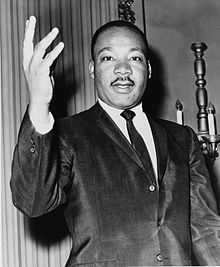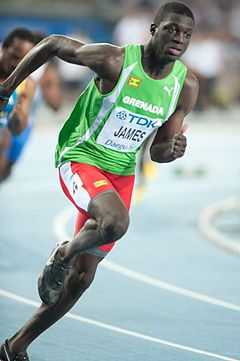Afro-American peoples of the Americas
| |||||||||||||||||||||
| Total population | |||||||||||||||||||||
|---|---|---|---|---|---|---|---|---|---|---|---|---|---|---|---|---|---|---|---|---|---|
|
Approx. 180,000,000 including partial ancestry | |||||||||||||||||||||
| Regions with significant populations | |||||||||||||||||||||
| Throughout the Americas | |||||||||||||||||||||
| ~6.84% black or 14,500,000 + 43.80% if including (multiracial) pardo (mestizo) or 83,540,920 [1][2] | |||||||||||||||||||||
| 42,020,743 [3] | |||||||||||||||||||||
| 8.5 million | |||||||||||||||||||||
| 7,985,991 | |||||||||||||||||||||
| 4,944,400[4] | |||||||||||||||||||||
| 3.9 million | |||||||||||||||||||||
| 2.7 million | |||||||||||||||||||||
| 945,665[5] | |||||||||||||||||||||
| 879,121 | |||||||||||||||||||||
| 861,427 | |||||||||||||||||||||
| 181,154[6] | |||||||||||||||||||||
| Languages | |||||||||||||||||||||
| English, Portuguese, Spanish, Haitian Creole, French, Papiamento, Dutch, English creole and many others | |||||||||||||||||||||
| Religion | |||||||||||||||||||||
| Christianity, Rastafari, Afro-American religion, Islam | |||||||||||||||||||||
| Related ethnic groups | |||||||||||||||||||||
| African diaspora | |||||||||||||||||||||
Afro-American peoples of the Americas is used to refer to people born in the Americas who have African ancestors. Most are descendants of people enslaved and transferred from Sub-Saharan Africa (the vast majority of the Gulf of Guinea) to the Americas by Europeans, to work in their colonies, mostly in mines and plantations as slaves, between the sixteenth and nineteenth centuries. At present, they constitute about 18% of the population of the Americas, with the largest concentrations by percentage of population in Haiti (92%), Jamaica (91%), Barbados (90%), Turks and Caicos (90%), Dominica (87%), The Bahamas (85%), Dominican Republic (84%),[7] Saint Lucia (83%), Saint Vincent and the Grenadines (66%), Bermuda (55%), Cuba (50%), Puerto Rico (46%), Belize (35%), Trinidad and Tobago (34.2%),[8] Brazil (29%), Panama (21%), United States (13.6%),[3] Colombia (10.52%),[4] Uruguay (6%),[9][10] Canada (2.9%),[5] and Venezuela (2.8%).[6]
Afro-American history
After the United States achieved independence, came the independence of Haiti, a country populated almost entirely by Afro-Americans, the second American colony to win its independence. After the process of independence, many countries have encouraged European immigration into America, thus reducing the proportion of black and mulatto population throughout the country: Brazil, United States, Dominican Republic, etc. In the Casta system, imposed by the Spanish Empire in their American colonies, the son of black and European was called a mulatto, and the son of black and Amerindian was called zambo, among many other denominations for further mixes.
Over the last century, the American society has evolved and regressed constantly. It seems like certain issues are being prioritized and some simply pass under the radar. African Americans in professional sports is a topic that most people perceive as irrelevant because of the poor reputation of black athletes in society. They are often perceived as brutal and barbarous and are repeatedly targeted as dreadful, compared to the other public figures. Connor Pisano states; “Indeed, it was not until 1947 that Branch Rickey, a former player and the savvy general manager of the Brooklyn Dodgers, would give Jackie Robinson the next opportunity for blacks to integrate the major leagues. Taking advantage of the circumstances, Robinson and other black major leaguers served as heroes to great numbers of blacks throughout the country and were deemed by some as pioneers of the civil rights movement.”.[11]
Nowadays the American society seems to forget that athletes like Jackie Robinson and Mohammed Ali are pillars and living legends. These are individuals who've taken the ideas of greats like Malcolm X and Martin Luther King and have done concrete accomplishments for the American society. The status of racial inequality in sports has always been questioned since African Americans seemed to perform better in professional sports. The mere idea of them being more talented than a white player was frightening to white folks. Therefore, all black leagues were assembled to allow negro players to compete. I believe we tend to forget that athletes are a major part of the community and we often forget all the goods for one bad.[12]
Afro-American population today
From 21st to November 25 of 1995, the Continental Congress of Black Peoples of the Americas was held. Afro-Americans still face discrimination in most parts of the continent. According to David D.E. Ferrari, vice president of the World Bank for the Region of Latin America and the Caribbean, Afro-Americans have lower life expectancy, higher infant mortality, more frequent and more widespread diseases, higher rates of illiteracy and lower income than Americans of different ethnic origin. Women, also the subject of gender discrimination, suffer worse living conditions.
Even in countries like Brazil, with 6.9% of phenotypically Black population and 43.8% of pardo (mestizo), poverty is common. It is nevertheless important to note that the´Pardo category includes all mulattoes, zambos and the result of their intermixing with other groups (which is not sufficiently Subsaharan-looking to be negro and not sufficiently European-looking or Levantine-looking to be branco), but it is independent of African descent, with most White Brazilians having at least one recent African and/or Native American ancestor and Pardos also being caboclos, descendants of Whites and Amerindians, or mestizos. There are more definitions on the differences and social disparity between blacks, "non-white non-blacks" and whites in Brazil in the Black people article section.
According to various studies, the main genetic contribution to Brazilians is European (always above 65%, and an American one found it as high as 77%), and Pardos possess an intermediate degree of African descent when compared to the general White Brazilian and Afro-Brazilian populations (the previous mostly with some detectable non-white ancestor and the latter highly miscegenated) and exhibit a greater Amerindian contribution in areas such as the Amazon Basin and a stronger African contribution in the areas of historical slavery such as Southeastern Brazil and coastal Northeastern cities, nevertheless both are present in all regions, and that physical features did not correlate with detectable ancestry in many instances.[13][14][15][16][16][17][18]
On November 4, 2008, the first afrodescendant U.S. president, Barack Obama, won 52% of the vote, following positive results in states that had traditionally been won by Republican presidents, such as Indiana and Virginia.
Related bibliography
- Ethnic domination and racist discourse in Spain and Latin America.Dijk, Teun A. van. van. Gedisa Editorial SA ISBN 84-7432-997-3
- Gender, class and race in Latin America: some contributions.Luna, Lola G. Ed PPU, SA ISBN 84-7665-959-8
- Gender, race and class "color" desensientes Latinas. Impoexports, Colombia, Yumbo
See also
- African African-American
- Afro-Latin American
- Afro-descendent
- Foreign-born Afro-Americans
- Afro-Caribbean
References
- ↑ http://www.ibge.gov.br/english/estatistica/populacao/censo2010/caracteristicas_da_populacao/tabelas_pdf/tab3.pdf
- ↑ "The Genomic Ancestry of Individuals from Different Geographic Regions of Brazil is more Uniform than Expected". PLOS One. October 30, 2010.
- ↑ 3.0 3.1 "US Census Bureau" (PDF). Census.gov. Retrieved 2013-10-02.
- ↑ 4.0 4.1 "Visibilidad Estadistica Etnicos" (PDF). Censo General 2005. Departamento Administrativo Nacional de Estadistica (DANE). Retrieved 15 June 2013.
- ↑ 5.0 5.1 "National Household Survey (NHS) Profile, 2011". Statcan.gc.ca. 2013-05-08. Retrieved 2013-05-27.
- ↑ 6.0 6.1 http://www.ine.gov.ve/CENSO2011/documentos/pdf/ResultadosBasicosCenso2011.pdf P. 14
- ↑ "CIA – The World Factbook – Dominican Republic". Central Intelligence Agency (CIA). Archived from the original on 12 June 2007. Retrieved 2007-06-04.
- ↑ Bethel, Camille (2013-02-20). "Census: Mixed population on the rise | Trinidad Express Newspaper | News". Trinidadexpress.com. Retrieved 2013-11-26.
- ↑ 2010.census.gov. Retrieved June 8, 2009.
- ↑ "Ethnic groups by Country (%)". Cia.gov. Retrieved 2013-11-26.
- ↑ Pisano,Connor. The impact of the integration of Baseball on black athletes and the black community. 05-29-13.
- ↑ Siegel, Donald. Race and Sports. Web publication.
- ↑ NMO Godinho O impacto das migrações na constituição genética de populações latino-americanas. PhD Thesis, Universidade de Brasília (2008).
- ↑ Pena, Sérgio D. J.; Di Pietro, Giuliano; Fuchshuber-Moraes, Mateus; Genro, Julia Pasqualini; Hutz, Mara H.; Kehdy, Fernanda de Souza Gomes; Kohlrausch, Fabiana; Magno, Luiz Alexandre Viana; Montenegro, Raquel Carvalho; Moraes, Manoel Odorico; de Moraes, Maria Elisabete Amaral; de Moraes, Milene Raiol; Ojopi, Élida B.; Perini, Jamila A.; Racciopi, Clarice; Ribeiro-dos-Santos, Ândrea Kely Campos; Rios-Santos, Fabrício; Romano-Silva, Marco A.; Sortica, Vinicius A.; Suarez-Kurtz, Guilherme (2011). Harpending, Henry, ed. "The Genomic Ancestry of Individuals from Different Geographical Regions of Brazil is More Uniform Than Expected". PLoS ONE 6 (2): e17063. Bibcode:2011PLoSO...6E7063P. doi:10.1371/journal.pone.0017063. PMC 3040205. PMID 21359226.
- ↑ (Portuguese) Nossa herança europeia —. Cienciahoje.uol.com.br. Retrieved on 2012-05-19.
- ↑ 16.0 16.1 Lins, T. C.; Vieira, R. G.; Abreu, B. S.; Grattapaglia, D.; Pereira, R. W. (March–April 2009). "Genetic composition of Brazilian population samples based on a set of twenty-eight ancestry informative SNPs". American Journal of Human Biology 22 (2): 187–192. doi:10.1002/ajhb.20976. PMID 19639555.
- ↑ Folha Online – Ciência – DNA de brasileiro é 80% europeu, indica estudo. .folha.uol.com.br (2009-10-05). Retrieved on 2012-05-19.
- ↑ De Assis Poiares, Lilian; De Sá Osorio, Paulo; Spanhol, Fábio Alexandre; Coltre, Sidnei César; Rodenbusch, Rodrigo; Gusmão, Leonor; Largura, Alvaro; Sandrini, Fabiano; Da Silva, Cláudia Maria Dornelles (2010). "Allele frequencies of 15 STRs in a representative sample of the Brazilian population" (PDF). Forensic Science International: Genetics 4 (2): e61. doi:10.1016/j.fsigen.2009.05.006. PMID 20129458.
| ||||||||||||||||||||||||||||||||||||||||||||||||||||||

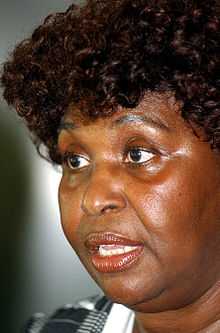
_crop.jpg)

